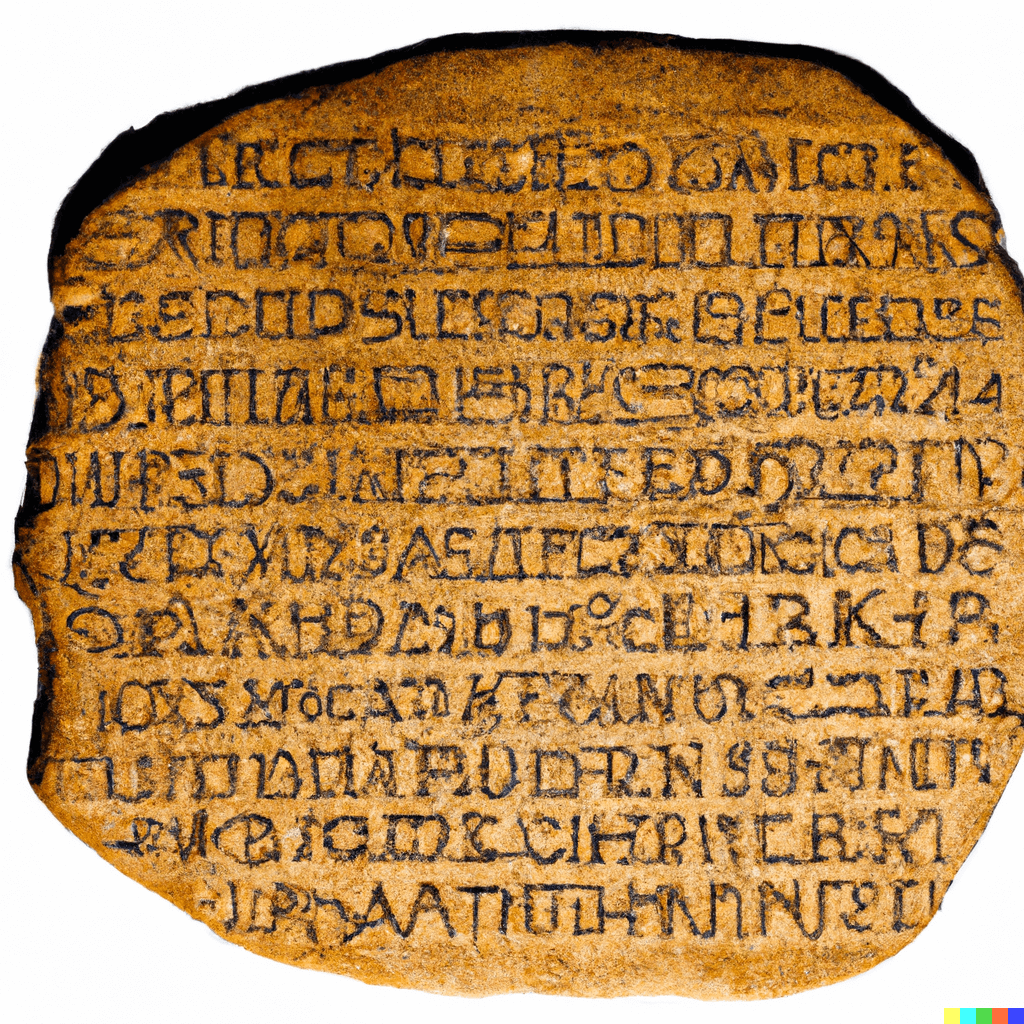Yeah, that guy’s issue isnt a matter of “Microsoft has control over my PC!!!”; more like “I’ve been using a computer for years and never actually looked at how things work under the surface”.
Simple permissions error, happens in Linux all the time as well.
Right?
This reeks of inexperience.
We lock things down because a malicious program can easily be “owned” by the user through stupid choices. And now you got viruses.
This is a way to stupid proof things. And the workaround isnt difficult, but it’s to stop people like Andrew. And so far, success.
Why are you assuming so much about Andrew?
What are these workarounds? And why are they workarounds and not standard procedures?
The workaround is to log in as an administrator and give his user account the permission to modify the files. Why is it not standard procedure? Because giving normal users the permission to edit everything by default instead of just files that they own is how people used to be able to delete system32 and brick their windows install.
sudo apt install linux
problem fucking solved
Package “linux” is already the newest version.
“sudo is not recognized an an internal or external command”
I literally saw that kind of message very recently on a nixos based machine and I literally had to stand up and do a lap. What in God’s green earth do you mean there’s no ‘sudo’??
If you follow the Arch installation guide it’ll get you to a working system, but you’ll need to install sudo yourself. It’s not strictly required so it’s not installed with the essential packages (or even the packages recommended for most users in the guide).
Linux: Keeps the same quirks in shells alive for half a century BeCaUsE bAcKwArDs CoMpAtIbIlItY.
Also Linux:

run0 for you my guy
i mean there are other superuser commands, BSD doesn’t use sudo for example, it uses “doas”
apt remove sudosudo is not installed on several distributions by default, so hardly surprising it’s not there or that you can remove it.
Nixos scares me
Average person over 40
/s
Andrew is going to get malware on his PC, guaranteed.
“I shouldn’t have to use permissions or sudo, just all root all the time”
Real superuser allow every programs and services run as root
“Real Men Run As Root”
I don’t run as root because I’ve always been told I shouldn’t. I don’t know enough about anything to be contradicting stuff like this. It has always seemed weird to me that we don’t run as root and then just sudo everything, though.
What is the reason we don’t run as root?
What is the reason we don’t run as root?
We are human and make mistakes. Not running as root means the computer will ask us to confirm when we are about to do something major (like a software update, or formatting a partition). This reduces the chance of making big mistakes. (But I don’t see why VLC shouldn’t be able to run as root, if the user so desires.)
(But I don’t see why VLC shouldn’t be able to run as root, if the user so desires.)
You don’t run VLC as root because you don’t especially trust that build of VLC
We don’t run random stuff as root because it’s a stupid risk. We try to only take necessary risks. Risks that make things easier. Running random programs as root gains you nothing and causes annoyance in that you need to fix permissions on its configuration files if you want to run out as a user
There is nothing stopping you though if you want to set up a Linux machine where you log in as root, run a desktop environment as root, run apps as root. You’re unlikely to be taking an unreasonable risk as a home user.
A big part of it comes from the security model and Linux historically being a multi-user environment.
rootowns the root directly/which is where all of the system files live. A normal user just has access to their own home directory/home/usernameand read-only access to things the normal user needs like the/binwhere programs are stored (hence/bin/bashin lots of bash scripts, it tells the script what program to run the script from)Because of this model, a normal user can only mess up their own files, while root can mess up everyone’s files and of course make the system non-bootablem. But also you can have user Bob signed in and doing stuff but unable to access user Alice’s files, and user Alice can be doing stuff and even running the same programs that user Bob is running (since it’s read only there’s no conflict) and then the administrator can log in as
rootto install something because they got a ticket to install suchandsuch for soandso.Back to your point with
sudo,sudois Super User Do, so you are running a single command asroot. By running it as root you can potentially be messing up with Alice and Bob might be doing, and most importantly whatever you are running withsudocan potentially affect any file on the computer. So if you run the classicrm -rf /it will delete every file that the user has write access to, so if bob runs it it’ll delete all of/home/bob/but Alice will be unaffected, and the admin can still log in asrootto do stuff.If you host a website you’ll generally take advantage of this by giving the
wwwfolder read-only access so that web users can only see webpages and can’t start reading random system files, or for server software you can create a dedicated user to run that server software as, so if someone were to somehow exploit a vulnerability and gain access to that server user they can only mess up the software and no system filesYou’re not supposed to “sudo everything” though. It’s mostly for changing the system configuration (editing config files in /etc/, running your system package manager etc.). It shouldn’t be a “oh, I got a permission error, better sudo the same command again olol”
Because you might accidentally do something which breaks the system, or you might run a program which does something malicious without your knowledge.
By gating dangerous (or protected for any other reason) commands behind sudo, you create a barrier which is difficult to accidentally cross
Is this real? Are people having to request permission changes on files by petitioning microsoft to change their permissions?
I think what happened here is that something went wrong and messed up the permissions of some of the users files. MS help suggested that he login as an administrator and reatore the intended permissions.
I don’t work with Windows boxes, but see a similar situation come up often enough on Linux boxes. Typically, the cause is that the user elevated to root (e.g. the administrator account) and did something that probably should have been done from their normal account. Now, root owns some user files and things are a big mess until you go back to root and restore the permissions.
It use to be that this type of thing was not an issue on single user machines, because the one user had full privileges. The industry has since settled on a model of a single user nachine where the user typically has limited privileges, but can elevate when needed. This protects against a lot of ways a user can accidentally destroy their system.
Having said that, my understanding of Windows is that in a typical single user setup, you can elevate a single program to admin privileges by right clicking and selecting “run as administrator”, so the advice to login as an administrator may not have been nessasary.
On that last part, theres a difference between elevating a file to admin, and being an admin in Windows.
In a lot of cases the ui is GREATLY simplified when not an admin, to the point where you might only have like 20% of all available options.
For the standard user? Great! Not when you’re messing around with permissions.
It’s why you ALWAYS log in as Admin when setting up a windows server. Iirc you can’t even install tiles without actually being an admin, even if you have all logins.
From my experience with windows, your current guess is correct btw :D
So this guy is just bitching because he sudo installed something?
It’s not MS having to manage your folder permissions remotely?
I feel like he has a machine that someone set up for him, and he can’t escalate permissions, because he’s on a basic user account.
The normal way this works on a single user machine is:
- You try to do something that is restricted to admin
- Windows puts up a modal dialogue box asking if you want to do it as admin
- You click yes
- You do it as admin
But in that case he can’t have locked himself out of a file, he can only be locked out of things Microsoft think you shouldn’t muck with unless you know what you’re doing
I’m a sysadmin and I work with Windows a lot.
The short version is that only the users granted permission to a given set of files can access those files. With NTFS permissions it’s… Complicated. You can have explicit permission to a file, or implied permission via a group that you’re a part of, or some combination of those things. You can also have read, but no write. You can have append but not create, you can have delete, but not list. It’s a lot of very granular, very crazy permissions.
There’s also deny permissions which overrule everything.
What has likely happened is that the posters user account doesn’t have implied or explicit permission to the file, but if you sign in as an administrator, even if the administrator doesn’t have permission to read/write/append/delete the file, the administrator has permission to take ownership of a file, and as owner, change the permissions of a file. Being owner doesn’t mean you can open/read/write/append/delete anything, you can just change permissions and give yourself (or anyone else) permissions to the file.
Changing ownership is a right which, as far as I’m aware, cannot be revoked from admin level users. They can always change ownership. Owners of files cannot be denied the right to change the permissions of a file as far as I know. This will always result in some method by which administrative level accounts can recover access to files and folders.
In my experience, exceptions exist but are extremely rare (usually to do with kernel level stuff, and/or lockouts by security/AV software).
The poster might legally and physically own the device and all the data contained therein, and may have an administrative level account on that device, but the fact is, their NTFS permissions are not set to allow them access to the data. The post they’re replying to is trying to let them know how to fix it by using an administrative level account and they’re not tech-savvy enough to follow along.
I don’t blame them. File permissions issues are challenging even for me, and I fully understand the problem.
Huh, having separate append permission is interesting. i didn’t realize that was an option.
Yep, there’s actually quite a few more than what I mentioned, if you get into the advanced dialogs.
IMO, it’s unnecessarily complicated, but given that NTFS is used for network file sharing in large companies, I get why it’s so crazy. They probably demand those kinds of granular permissions.
I know Linux is a lot simpler. Just read/write/execute, and a single group, single owner, and a setting for “everyone else” kind of thing, which is generally sufficient for 90% of use cases.
My man just reinvented free software.
Eh? On Linux you also aren’t supposed to log in as root, and you also have to individually set file permissions.
This issue is unrelated to windows, it’s a safety feature that all modern desktop OSes have
It’s quite common to login as admin on windows though (in home setups), you’ll still have to authenticate for administrative tasks (the UAC popups).
The issue here is mostly that the user has probably upgraded and windows changed their account, resulting in the files being owned by their old account.
In linux, that’s fixable with ‘sudo chmod -R’
In Windows, there’s no built-in way, you need the take ownership script.
i mean, chown is just a binary. takeown is probably pretty similar, right?
Yes, but on Linux, if I am root, I am God. I do whatever the fuck I want with my machine, for good, evil or stupidity. That’s the poster’s point. It seems like Windows doesn’t allow you to do this, or at least not easily. So I guess people who want to have absolute control over their computer shouldn’t be using Windows, I guess.
Ok boomer
bro has never heard of a computer owned by more than one person
In defense of Andrew, until windows 10 never had I ever installed a program that made it’s own files untouchable unless you did some real fuckery with permissions.
As soon as they introduced that little warning screen in program files it was clear shit was going downhill for power users.
I discovered basic versions of windows are even more restrictive when I was unable to install my favorite lightweight pdf reader in a friend’s laptop because Windows home just said that for my safety I wasn’t allowed. With no option to bypass this limitation being hinted at.
Ended up installing it anyways but had to run the installer from an admin terminal (luckily it was windows 7 so it was a local account with admin rights instead of a bullshit Microsoft one)
basic windows… does that entail windows N by any chance?
drop the pdf reader. libreoffice makes the pdfs look horrific and apache doesnt work
that made it’s own files untouchable
that made its* own files untouchable
The real answer?
“We once gave you commoners this power and you used it to fuck your computer up and then blamed us for it, so we learned you can’t be trusted with this power. We hid it behind a kind of skill test, and you’re failing that test.”
I prefer the answer of giving the giy the reins and letting him get it so riddled with viruses then when he calls for support replying “sorry, your property your problem. You have absolute dominion over it and thus we give no warranty as we have no responsibility.”
Microsoft gives no warranty and assumes no responsibility as it is.
😂👌 this
Why can’t I delete System32? It’s taking up space.
Where are the other 31 systems??
Reminds me of the “chmod 777” crowd at work. Goddamn it.
Good luck with opening the subdirectories of
C:\WindowsApps\. I ran Explorer as admin, gave myself R/W permissions, even recursively changed ownership of everything, followed all the online guides… Still denied access.If you make a bootable linux usb drive you can do whatever you want with all windows stupid files without even having to install linux.
U can use proccess hacker to lauch for example total commander with SYSTEM privileges it’s highest possible privilege in windows.
it’s highest
its*
hightesthighestHighest*
Whoops! Thanks. Corrected.
@ChaoticNeutralCzech
Tried knoppix?
@Reddfugee42 @programmerhumorThose’re probably containerised.
Sandboxed rather than containerised I think.
what was the difference for those of us who dont know, like andrew over here 😂
Sandboxed typically restricts a program from being able to read/write to various areas (think an app isn’t allowed to use the network, or access USB devices, or it’s only allowed access to a certain directory in the filesystem).
Containerised is a way of virtualising an app/apps so that they can be easily distributed to run once or thousands. They can and are also sandboxed to different degrees.
you’re an idiot Andrew
I want to say “Haha, Idiot trusting Microsoft”.
But honestly I want the same stuff he wants. Including modems in mobile phones. Including EVERYTHING I own.
There’s an OS you might like. It has no UAC, no file permissions, no sudo nor chmod, as it has no multi-user support, no antivirus and no firewall, no protection rings, not even spectre/meltdown mitigations, and most of all - no guard-rails whatsoever: You can patch the kernel directly at runtime and it won’t even give you a warn. And yet, it is perfectly safe to run. It’s called TempleOS and it achieves such a flawless security by having no networking support whatsoever and barely any support for removable media. If you want a piece a software - you just code it in, manually. You don’t have to check the code for backdoors if it’s entirely written by you… only for CIA at your actual back door…
Huh, didn’t realise Windows is on a level to be compared to TempleOS. And losing. Thanks for that.
What does ‘modems in mobile phones’ mean? Isn’t the whole thing a modem strapped onto a screen? What am I missing?
A lot of phone modems ship with their own SoC (processor) running its own OS. It’s much smaller and slower than the main phone SoC but, depending on its implementation, it can have full access to all of your main processor’s memory through DMA.
I just saw discussions like this
So no, there are more parts to your phone. You forgot the whole part you, the user, solely interact with.
I think they just mean they should have control over the modem. They are all locked down and proprietary with known backdoors throughout history, effectively bypassing any OS level security.
Oh! I know! Andrew wants Windows 95. But then he won’t be able to post questions on the Internet any more 😔 .
There are versions of OS/2 or BeOS that might fit his style. Although they’re called something else nowadays.
Andrew complains, Microsoft makes a root mode so Andrew can have his way. Andrew breaks his computer the next second by deleting a system file and proceeds to call Microsoft support. :)
HE SHOULDN’T HAVE TO LOG IN AS ROOT. IT’S HIS COMPUTER!!!
Most of the annoying stuff that Linux users hate about Windows are because Windows has to cater to even the least technologically knowledgeable users.
It is why Windows updates are forced, why so many files are locked behind SYSTEM user and can’t easily be circumvented, why some settings are registry or Group Policy only, why some settings are opt out, …
Without those, their support center would blow up.
So if Linux wants to become mainstream, it will have to cater to those users as well. And Linux will slowly turn into Windows.
Most of the annoying stuff that Linux users hate about Windows are because Windows has to cater to even the least technologically knowledgeable users.
Isn’t that the whole idea of GNOME? Always considering users as stupid and lowering the bar?
I won’t stand any gnome slander, get out
And Linux will slowly turn into Windows.
Some distros maybe, but I’d say that instead we’d quickly have another golden era of malware.

















